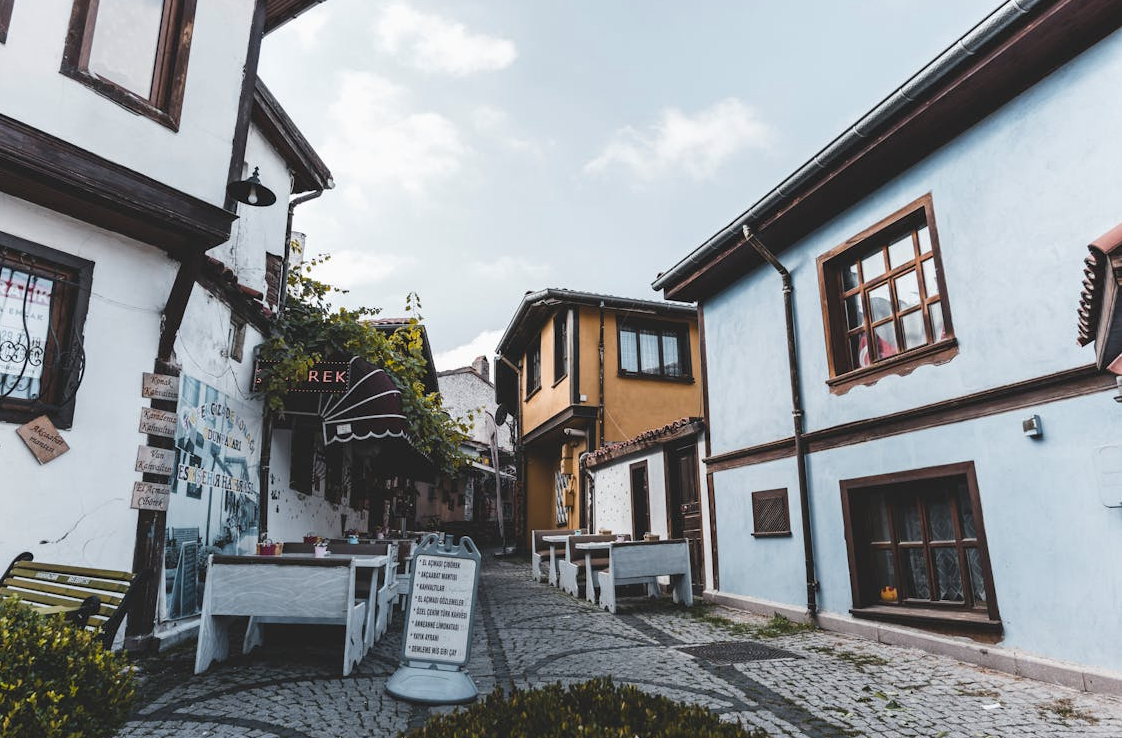Odunpazarı, one of the oldest settlements in Eskişehir province, is located in the southern part of the city and stands out with its historical texture. The city was opened for settlement by the Hittites in the 1460s BC and over time came under the domination of various civilizations such as the Phrygians, Lydians, Persians, Macedonians, and Romans. After this date, especially with the Ottoman period, and the Seljuks' capture of the region in 1074, the city showed significant cultural and economic development.
History
The historical process of Odunpazarı begins with the ancient city of Dorylaion. Dorylaion, founded by the Phrygians around 700 BC, has been under Roman, Byzantine, and Seljuk rule over time. This process has left traces of different civilizations in the city. With the influence of Islam, the city, which came under Seljuk rule in 1074, was named Sultanönü and was transformed into an important cultural center by the Ottomans. The Turkish period settlement of Odunpazarı first concentrated around the Alaeddin Mosque. This mosque, built in the 13th century, laid the foundations of the Turkish settlement. Important structures were built in the region during the Seljuk and Ottoman periods. These include Karacahisar Castle, conquered by the Ottomans in 1288, and the Kurşunlu Mosque complex, built in the 16th century. During this period, the Odunpazarı district became the administrative and cultural center of the city.
Development in the Last Century
With the immigrants who came to the region after the Ottoman-Russian War, Odunpazarı's population increased, and its economic development accelerated. Towards the end of the 19th century, the arrival of the railway in the city further increased Odunpazarı's commercial importance. Today, Odunpazarı, which stands out with its historical structures and traditional neighborhood texture, has developed further with the establishment of Odunpazarı Municipality in 2008 and has hosted various cultural events. Since 2012, Odunpazarı, which is on UNESCO's Tentative World Heritage List, has been defined as a region that needs to be protected both locally and internationally.
Geographical Structure
Odunpazarı is located at a dominant point overlooking the Eskişehir Plain and has developed around the Porsuk Stream. This location has provided strategic advantages to the city and allowed the expansion of the settlement area. In the past, Odunpazarı was determined as the most suitable region for settlement through a sheep lung experiment conducted around the Porsuk River, and today it is still one of Eskişehir's most historical and densely populated districts. Geographically close to the center of Eskişehir, this district is surrounded by the Bozdağlar and Sündiken Mountains to the north. The provincial center, with an altitude of 792 meters, has a typical Central Anatolian topography along with the surrounding mountains. Historically, Odunpazarı has played a major role in the development of Eskişehir and holds an important position both naturally and strategically.

Porsuk Stream (Source:Pexels Burkay Canatar)
Odunpazarı, located in the southern part of Eskişehir, features houses with traditional civil architectural examples of the Ottoman period, narrow streets, and winding roads. This region is full of ancient settlement traces and bears the imprints of Seljuk and Ottoman influence, especially since the 13th century. Over time, this region has become one of Eskişehir's most important trade and residential areas, carrying the traces of Ottoman architecture to the present day.
As for its geographical structure, the area where Odunpazarı is located experiences the typical continental climate of Eskişehir. Summers are hot and dry, while winters are cold and snowy. This climate has been effective in shaping the agricultural and settlement structure of the district. In the region, the local people's interest in agricultural activities and traditional production methods are widespread, as well as the cultivation of vegetables in microclimate-affected areas and Mediterranean plants such as olives.
Architectural and Cultural Features
One of the most important features of Odunpazarı is the high concentration of traditional Turkish houses. These houses bear the architectural characteristics of the Ottoman period and stand out especially with their interior and exterior space design. The houses are built adjacent to each other on narrow streets and reflect the traditional Turkish neighborhood structure. Furthermore, Odunpazarı has been an important center of Mevlevism. The 400-year Mevlevi period holds a significant place in the city's cultural fabric. Today, the Mevlevihane and historical mosques in the region bear the traces of this period.

Odunpazarı Houses (Source Pexels/ Zafer Erdoğan )
Historical structures are more frequently encountered in the Odunpazarı district of Eskişehir.
- Akoğlan Mosque (Odunpazarı): Dating back to the 16th century, Akoğlan Mosque is an example of Ottoman period architecture. It holds great importance both as a religious structure and architecturally.
- Alaaddin Mosque (Odunpazarı): Built in the 13th century with Seljuk period architecture, Alaaddin Mosque is one of Eskişehir's oldest mosques and holds an important place among the religious structures in the city.
- Karacahisar Castle (Odunpazarı): Karacahisar Castle, one of the first conquests of the Ottomans, is of great historical importance and is one of the symbols of the city.
- Kurşunlu Mosque and Complex (Odunpazarı): This complex, an example of Ottoman period architecture, was built in the city as a large religious complex.


